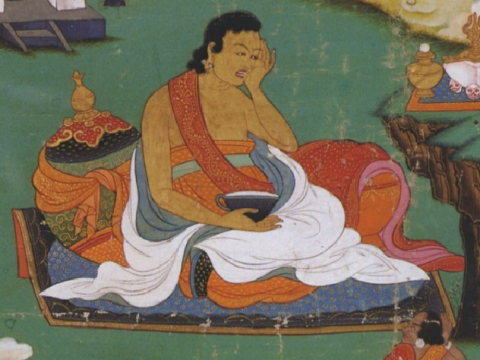The forms ra and ru, ‘i and yi or ‘ang and yang
May change to accommodate lines of verse.
The same principle determines whether or not
There is a dot (tsheg) before ‘o, ‘u and ‘am.
Chapter 10: Benefitting sentient beings

In Chapter 10, Milarepa's life comes to an end. In this Unit, you will read the final chapter of this abridged life story. You will memorize a traditional grammar verse and practice word sequencing for some short Tibetan sentences.
When you’re ready to study Chapter Ten, begin with 10.1 Sentence Building (no Grammar Preview this week!). With those, you should be ready to try 10.2 Reading & Translation. You should also memorize the Tibetan grammar verse, review your grammar with 10.4 Sequencing Practice, and practice your pronunciation by following along with 10.5 Reading Aloud.
Finally, in 10.6 you will watch three videos on the importance of Tibetan language preservation. For more on the hip-hop video in particular, see an article on this video on the Smithsonian Institution website.
Reading & Translation from the Life of Milarepa
Particles in verse
Rearrange the following words so that they make the phrase below in correct Tibetan word order. For help, press the Colors button to color words according to their grammatical categories, or the Hint button to show word glosses when hovering over a word.
When you are finished with an example, press Mark. If your answer is correct, then press Next to move on to the next example. If your answer is incorrect, then you may have to repeat the exercise one or more times. Press the Repeat button to do so. Note that this is just to give you more practice; repeat attempts will neither help nor hurt your score. When you have attempted an exercise as many times as allowed, then press Answer to see the answer.
